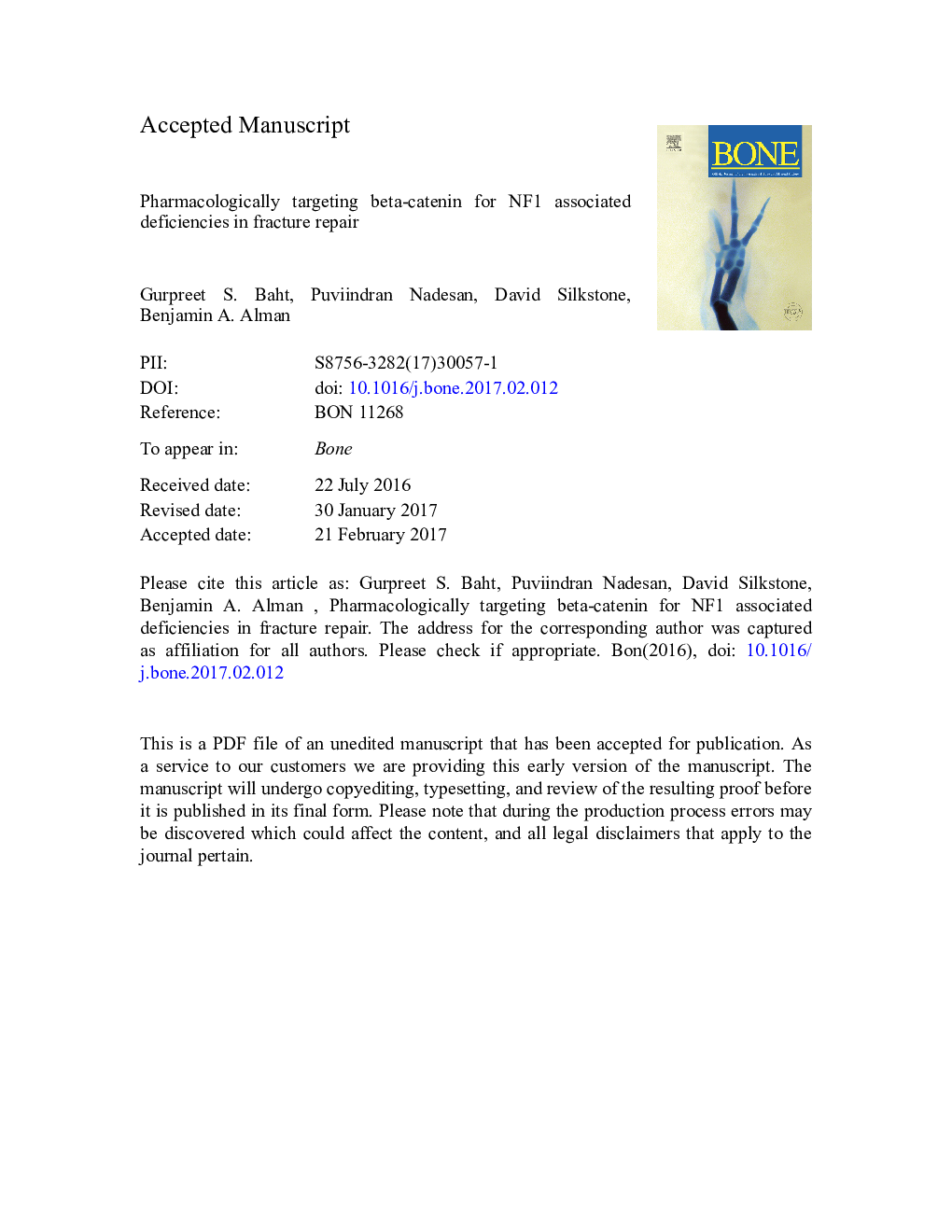| Article ID | Journal | Published Year | Pages | File Type |
|---|---|---|---|---|
| 5585325 | Bone | 2017 | 23 Pages |
Abstract
Patients with Neurofibromatosis type 1 display delayed fracture healing and the increased deposition of fibrous tissue at the fracture site. Severe cases can lead to non-union and even congenital pseudarthrosis. Neurofibromatosis type 1 is caused by a mutation in the NF1 gene and mice lacking the Nf1 gene show a fracture repair phenotype similar to that seen in patients. Tissue from the fracture site of patients with Neurofibromatosis type 1 and from mice deficient in the Nf1 gene both show elevated levels of β-catenin protein and activation of β-catenin mediated signaling. Constitutively elevated β-catenin leads to a delayed and fibrous fracture repair process, and (RS)-5-methyl-1-phenyl-1,3,4,6-tetrahydro-2,5-benzoxazocine (Nefopam, a centrally-acting, non-narcotic analgesic agent) inhibits β-catenin mediated signaling during skin wound repair. Here we investigate Nefopam's potential as a modulator of bone repair in mice deficient in Nf1. Mice were treated with Nefopam and investigated for bone fracture repair. Bone marrow stromal cells flushed from the long bones of unfractured mice were treated with Nefopam and investigated for osteogenic potential. Treatment with Nefopam was able to lower the β-catenin level and the Axin2 transcript level in the fracture calluses of Nf1 deficient mice. Cultures from the bone marrow of Nf1â/â mice had significantly lower osteoblastic colonies and mineralized nodules, which was increased when cells were cultured in the presence of Nefopam. Fracture calluses were harvested and analyzed 14 days and 21 days after injury. Nf1â/â calluses had less bone, less cartilage, and higher fibrous tissue content than control calluses. Treatment with Nefopam increased the bone and cartilage content and decreased the fibrous tissue content in Nf1â/â calluses. These findings present a potential treatment for patients with Neurofibromatosis 1 in the context of bone repair. Since Nefopam is already in use in patient care, it could be rapidly translated to the clinical setting.
Related Topics
Life Sciences
Biochemistry, Genetics and Molecular Biology
Developmental Biology
Authors
Gurpreet S. Baht, Puviindran Nadesan, David Silkstone, Benjamin A. Alman,
